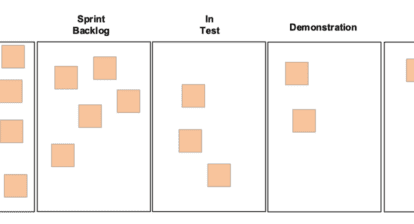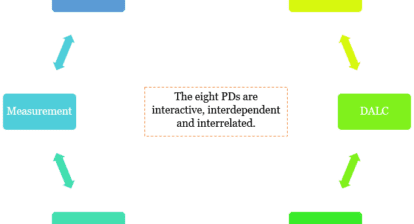
The Day I Knew I Was One…
Ironically, it was while managing a program to provide upgraded yurts to nomadic people in Southwest China. I realized that after almost 40 years of doing this type of work, I’d become as nomadic as those on the Tibetan plateau that I was trying to help—only perhaps more digitally so.
For the first half of my career, projects seemed to come to me, and not the other way around. In the days before my world traveling began (pre-9/11), I’d worked exclusively for IBM, and from a windowless office deluged with an endless stream of projects, for that matter. My workspace was just adjacent to a raised-floor littered with products and services yet to take life. I must admit that most never did!
So, what changed? How did I go from sedentary to nomadic without even noticing? As with any slow-motion evolution, the long answer is nuanced, but the short answer is that almost everything had changed right under my feet. A myriad of new global opportunities, upgrades to technology, deepening social and cultural connections, and the availability of cheap international travel fares were all factors that influenced my decision to go where the work was, instead of letting the work come to me. In essence, I became part of a nomadic workforce without realizing it. It’s a workforce that’s been growing year after year. The Economist estimates that there are currently millions of people working nomadically, and that this figure could rise to a billion by 2035.

A typical nomadic Yurt, this one made for travelling animal welfare workers. (courtesy AnimalNepal.org)
One of my favorite mentors when I was first starting out in the biz was Gene Kranz, NASA’s Flight Director for all the odd-numbered Apollo Lunar Missions; most notably Apollo 11 & 13. He coolly commanded a huge raised-floor full of technicians at Cape Canaveral, most huddling over crude computer consoles from which they sent astronauts into outer space. Yet, Kranz and his project team hardly ever left the Cape, not even for vacation.
I was enthralled by Kranz’s machismo management-style while working at IBM, as any scene from Kranz’s Mission Control was reminiscent of my own workplace during the 70’s and 80’s. Only from where I sat in Boca Raton (just a few hundred miles away), we were sending products into unexplored space, instead of brave test pilots made of the right stuff. Still, we both managed to go where no one had gone before. In my case, with new computers inserted into the home market instead of rockets making low earth orbit.
In addition to introducing computers into the home (and thus changing the workplace forever), IBM was one of the first corporations to explore sending employees home to work. I know this first-hand as I had participated in IBM’s first Work from Home program. I’d lug a “portable” PC from my office to my apartment (it was size of a carry-on suitcase), and from there, work three days a week. Unbeknownst to me at the time, that was the genesis for my becoming nomadic.
Fast forward an entire career, and now every manager I know is equipped with multiple devices that completely digitizes the Apollo Command Center of old, sans all the sweat and swearing. A 21st century manager can be onsite, offsite, on multiple sites, and in the cloud all day, any day, and from anywhere in the world. Gone are large, centralized and physical project centers; today you can easily manage projects from public work hubs, use software to teleport you offsite, and utilize Uber, the most efficient transportation system in history.
This nomadic concept of old (moving to greener pastures with your home packed on your back) has evolved into a newer, more expansive digital age, full of nomads working the world over. Now even project managers are joining the ranks of traveling baristas, extreme sports guides, and doctors without borders.
Tales from the Trail…
Meet Dan, he’s an American millennial managing infrastructure projects—ones that incorporate new stabilized soil technology designed to keep roads intact in ever-shifting terrains. We met up at a local Kathmandu café, and here is what he had to say about being nomadic:

Dan Lasota (International Development Consultant), a PM Nomad on the rise.
Me: Do you consider yourself a nomad, or just someone who likes to travel a lot?
Dan: Yes, I do consider myself a nomad. I don’t really have a permanent home per say, and I don’t keep a place back in the States. Don’t get me wrong, I’m not homeless, I’m an opportunist. I find opportunities everywhere when traveling. Being able to follow these opportunity (wherever they lead) fits my lifestyle, pays well, and is just flat out fun.
Me: Tell me about a project you’ve worked when you’ve felt most nomadic.
Dan: Well, there was a project in in Nicaragua where I went as part of a humanitarian relief effort. We had to rebuild housing after a major hurricane. Everybody seemed nomadic at that point. Seriously, doing project work in new environments can be challenging and unknowing (like in a Nicaraguan jungle after a hurricane), but it’s quite an adventure starting and finishing projects like that. I’m having a blast.
Then, there is Albert, an architect from my hometown of Brooklyn NY, who splits his time as CEO and lead PM between Nepal and several places in the States. He typically has several projects in multiple countries going on at once. Here is what he had to say during our last latte together:
Me: Do you consider yourself a nomad, or just someone who likes to travel a lot?
Albert: I’d say yes, I’m a nomad. While I like to combine business with pleasure as much as possible, I find that the world is filled with all sorts of interesting people and perspectives. For me,
interacting with a diverse population is stimulating, educational, and really gets your blood flowing. I think that with all the advances in technology and new global opportunities out there, anyone can work anywhere, as long as they are flexible…
Me: Well at our age, flexibility is not really a thing, is it?
Albert: [Laughing] When I’m feeling a bit weak in the knee, I can always send out an associate with a drone or a GoPro or whatever just to capture what I need. I recommend working abroad to all of my elderly colleges. It stimulates the imagination, revises your ideas on how to tackle a project (for the better), and keeps you young in body and thought. Working like this can actually reaffirm what life is all about and even renew your reason for living.

Albert Horowitz (of Horowitz Architects LLC), perhaps the eldest of PM nomads at 85.
Albert is amazing, and our conversation reminded me of my recent years in Africa, where it was my mission to train PMs and provide aid and comfort to newly established PMOs. Like a nomadic tribe of dispirit, but work-bound peoples, our teams spanned from Cape Town to the Congo (and even further north). We completed projects just as nomadic people of Yore moved around to find better hunting grounds, only our yurt was an Airbnb or a nice hostel and our prey was the project tasks at hand.
Again, I reflect on this nomadic (if not tectonic) shift in the way that project work is being done these days. Take for example the Belt and Road Initiative, where project teams are spread the entire length of a new Silk Road which spans 152 countries in all. Future mega projects also come to mind (mostly climate-change related) that will require project teams to replicate project success along vast coastlines and within the wild interiors of the planet. I myself was drawn to my current “yurt” by disaster recovery plans, renewable energy ideas, and earthquake-restoration projects. And, I am constantly meeting others who are moving along this same nomadic work path.
Dan is even thinking of starting a service for others like myself, or for any project manager hunting down work around the world which would match them with a company looking to hire a PM nomad. He’s currently getting his PMI certification, all while traveling from project to project, and he would like to make that lifestyle easier (and more economical) for others in the same boat. Here is a little of what he has to say about that:
Dan: I use LinkedIn (and all the other social media sites), as well as a dozen or more bid / tender / open contract sites to find project work. I’m also subscribed to sites where I can learn more
about project management and passing my certification test. Then, there are all the sites where I rent software. Too bad it’s all not in one place… On the flip side, there are also a lot of companies out there looking for managers who can work in remote and rough places. So, Jigs, how can we connect the dots? We need a tool, just for peeps like us!
I agree with traveling Dan, who hopes to continue this conversation online and someday create a digital platform for nomadic project managers sometime soon. How about you? You can let him know by joining his mailing list or let us know of your nomadic interests in the comments below. Whether you are already nomad, just thinking of being more nomadic, or at this very moment moving about with a digital yurt on your back, we’d be interested to learn more about how you’re doing ☺










Joe
Seems like a PM generalist would be the best and most employable kind of nomad (as opposed to, say, someone whose only experience is a scrum master for software projects or a formal PM in aviation-compliance). Then again, what a great way to expand one’s repertoire and become a PM generalist! I would have liked to know what kinds of PM methods they typically use for nomad projects. My guess is that these projects need a lot of ad hoc flexing and hands-on leadership more akin to being a front-line supervisor or a tactical consultant.
One note: the pmnomadsunite.com link did not work for me (as of 8/20/2019 9:07:52 AM).
Nice article. Thanks.
Jigs Gaton
@Joe, thx for the comment. I too would like to know what nomads are using re: methods. I suspect, it’s whatever the hiring client is using, which in the developing world, is either NONE or Waterfall. Lately, Agile is becoming more popular.
The correct URL to the mailing list (to find out more info on PM Nomads) is
http://www.pmnomads.com
Jigs Gaton
Hi Karla, thx for your comment. Sign up here (www.pmnomads.com) to find out more about mega projects that are climate-change related. I think Dave is putting together a list 🙂